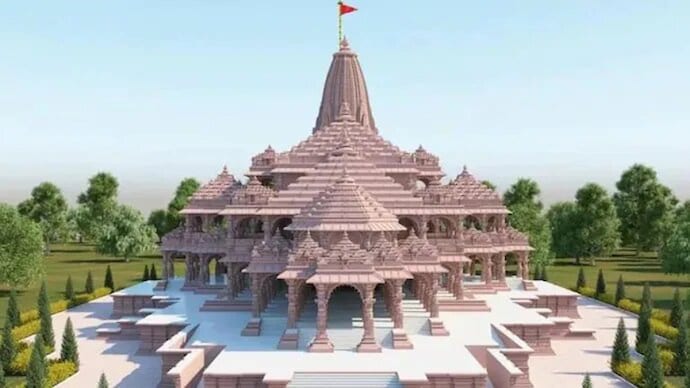The construction of the first floor of the revered Ram Temple in Ayodhya is set to begin by the end of this month, with work on the ground floor nearing completion, according to a member of the Shri Ram Janmabhoomi Teerth Kshetra Trust. The construction of the temple, a significant project overseen by the trust since 2020, marks a historic milestone for devotees eagerly awaiting its completion.
Historic Milestone: Construction of Ayodhya’s Ram Temple First Floor Set to Commence Soon
With final touches being given to the ground floor, the entire construction of this level is expected to conclude by October, paving the way for the commencement of the first floor’s construction. The foundation stone for the grand temple was laid in a momentous ceremony in August 2020, presided over by Prime Minister Narendra Modi, and has since been monitored by senior functionaries.
Recently, a team led by Nripendra Misra, chairman of the Ram Mandir Construction Committee, reviewed the progress of the construction, with members from engineering teams such as Larsen & Toubro, Tata Consulting Engineers, and the trust providing their expertise. The temple, a testament to architectural brilliance and devotion, boasts impressive dimensions, spanning 380 feet in length, 250 feet in width, and rising to a height of 161 feet from the courtyard. Its sanctum sanctorum covers an area of 20 feet.
The construction committee has meticulously ensured the creation of a sturdy foundation, with 160 pillars being erected on the ground floor. Among these pillars, six are crafted from white Makrana marble sourced from Nagaur district, while the rest are meticulously carved from pink sandstone procured from Bansi Paharpur in Rajasthan. Additionally, Makrana marble will grace the temple’s flooring, adding to its grandeur and splendor.
Apart from the sacred garbha griha (sanctum sanctorum), the temple encompasses five mandaps, each serving a unique purpose in facilitating religious ceremonies and rituals. These mandaps include the gudh mandap, rang mandap, nritya mandap, prathana mandap, and kirtan mandap. The dome sizes of these mandaps range from 34 feet wide and 32 feet long, with heights varying between 69 feet to 111 feet, creating a majestic ambiance.
Visitors to the temple will enter through the “singh dwar” and make their first halt at the “nritya mandap.” The penultimate halt for devotees will be at the “gudh mandap,” just before the sanctum sanctorum. It is important to note that only priests will be permitted to enter the sanctum sanctorum to perform the sacred rituals, ensuring the sanctity and reverence of the space.
Epic Inception: Ayodhya Temple’s Majestic First Floor Construction Embodies a Historic Milestone

The completion of the temple’s sanctum sanctorum is anticipated by the end of this year, with plans for the grand inauguration slated for January of the following year. The Shri Ram Janmabhoomi Teerth Kshetra Trust has extended a cordial invitation to Prime Minister Narendra Modi, suggesting three auspicious dates for the momentous opening ceremony. The final selection of the date will be made after consulting astrologers, with a shortlist between January 17 and 24 under consideration.
The trust, while refraining from revealing specific dates to the media, has highlighted that the commencement of rituals at the temple will coincide with Makar Sankranti, as per the Hindu calendar. This joyous occasion will mark a significant milestone in the hearts of millions of devotees who have ardently awaited the completion of the Ram Temple, a symbol of faith, unity, and devotion.

